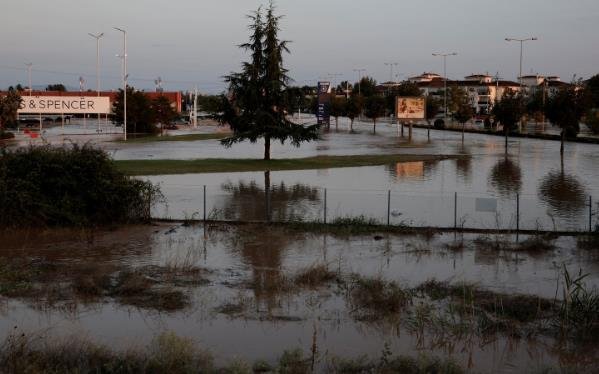The aftermath of storm Daniel, which hit central Greece last week, has revealed the extent of the damage to the region of Thessaly, where floods and landslides have destroyed houses, factories, crops and livestock. The death toll from the storm has risen to 10, while dozens of people have been injured or displaced.
The government has declared a state of emergency in the affected areas and has pledged to provide immediate financial aid to the victims, as well as to restore the damaged infrastructure. Prime Minister Kyriakos Mitsotakis visited the region on Friday and announced a compensation package of 5,000 euros for each household and 8,000 euros for each business that suffered losses.

However, the long-term economic impact of the storm is expected to be much higher than the initial estimates. According to government sources, the cost of the damage could reach 2.5 billion euros, while some economists have projected a range of 3 to 5 billion euros, taking into account the total destruction of capital and natural resources.
Storm Daniel exposes vulnerability to climate change
One of the main factors that contributed to the severity of the storm was the climate change that has increased the frequency and intensity of extreme weather events in Greece and other Mediterranean countries. According to a recent report by the World Meteorological Organization (WMO), the Mediterranean region is one of the most vulnerable areas to climate change in Europe, as it faces multiple threats such as rising temperatures, droughts, wildfires, floods and sea level rise.
The report also warned that climate change could have significant socio-economic consequences for the region, affecting sectors such as agriculture, tourism, energy, health and biodiversity. The WMO urged governments to take urgent action to reduce greenhouse gas emissions and adapt to the changing conditions.
In this context, storm Daniel has exposed the need for more effective prevention and mitigation measures in Greece, especially in regions that are prone to natural disasters. Some of the measures that have been proposed by experts include improving the drainage and irrigation systems, reinforcing the river banks and dams, creating buffer zones around urban areas, enhancing the early warning and emergency response systems, and raising public awareness and preparedness.
Recovery efforts face challenges and opportunities
As the recovery efforts continue in Thessaly, there are also challenges and opportunities for rebuilding the region in a more resilient and sustainable way. Some of the challenges include securing adequate funding from national and European sources, ensuring transparency and accountability in the allocation and use of resources, involving local communities and stakeholders in the planning and implementation process, and addressing potential demographic problems due to population aging and migration.
On the other hand, there are also opportunities for leveraging the recovery process as a catalyst for innovation and transformation. Some of the opportunities include applying green and circular economy principles, promoting renewable energy sources and energy efficiency, diversifying and modernizing the agricultural sector, enhancing digitalization and connectivity, developing new skills and competencies for workers and entrepreneurs, and fostering social cohesion and solidarity.
In this regard, some experts have suggested that Thessaly could benefit from existing initiatives such as the National Recovery and Resilience Plan (NRRP), which aims to mobilize 30.5 billion euros from the European Union’s Recovery Fund for Greece’s post-pandemic recovery. The NRRP includes several projects that could support Thessaly’s reconstruction, such as upgrading the road network, expanding broadband access, creating smart cities, supporting green tourism, restoring natural habitats, and strengthening health care services.
